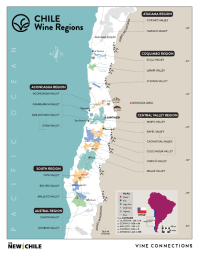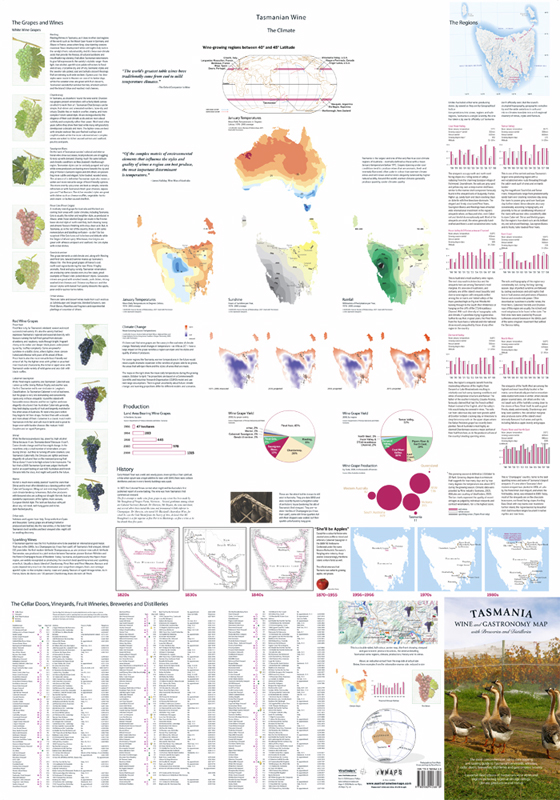
Today, such is the fickle nature of progress, that this technology seems so routine as to be almost mundane. Now, anybody could identify a wine from a photograph taken using their smartphone.
LABEL WINE MAPS PDF FULL
For full reviews, see the complete article below.ġ8 April 2016 When the first wine label scanning apps appeared around three years ago, it seemed like pocket-sized alchemy. Vivino and Delectable remain the main players, with Vivino still the most popular and most useful overall. Read more about Wines of the Loire Valley in this detailed guide.16 January 2020 Coming up for four years after this article was published, little has changed in the world of label-scanning apps. Look for wines labeled as Chinon and Bourgueil. Muscadet Sèvre et Maine is the most popular appellation for Muscadet.Ĭabernet Franc: A very herbaceous and rustic style of Cabernet Franc with spicy notes of bell pepper, tart red cherry, and gravelly minerality.

Wines are bone-dry with subtle notes of sea shell, lime, green apple, and pear skin. Muscadet (white): The perfect white for shellfish, clams, and mussels hailing from the western maritime region of Nantes in the Loire. Flavors range from delicate notes of flowers and apricots from Vouvray and Montlouis-sur-Loire, to rich applesauce-like flavors from aged Savennières. Wines are labeled Sancerre, Pouilly-Fumé, Touraine, Reuilly, Quincy and Cheverny (for classic 100% Sauvignon Blanc).Ĭhenin Blanc: In the middle Loire Valley is where you’ll find awesome Chenin Blanc wines that range in style from dry to sweet and still to sparkling. Sauvignon Blanc: A lean and herbal style of Sauvignon Blanc with flavors of thyme, lime peel, honeydew melon, and grass.

Read more about wines of Bordeaux in this detailed guide. The Sauternais appellations include Sauternes, Barsac, Cérons, and Cadillac among others. Sauternais (sweet whites): An intensely sweet white wine (perfect for dessert or pairing with Foie Gras). Entre-Deux-Mers and Pessac-Léognan offer great examples. Wines offer up pink grapefruit, green melon, and beeswax notes. White Bordeaux: Less the 10% of the region’s production is dedicated to White Bordeaux which is a zippy blend of Sauvignon Blanc and Sémillon. Look for wines from Pomerol, Saint-Émilion, and Fronsac. Right Bank Red Bordeaux: A slightly softer, rustic red made with mostly Merlot and Cabernet Franc, with flavors of black cherry, tobacco, and mint. Look for wines from the appellations in the Médoc including Saint-Estèphe, Saint-Julien, Listrac, and Margaux. This is a more rustic style of Cab-Merlot (compared to Napa Valley) that’s known to age well for 20+ years. Left Bank Red Bordeaux: A bold, dry red using Cabernet Sauvignon and Merlot in the blend, with flavors of black currant, graphic, mint, and gravelly-tobacco notes. These wines have been known to age for 100+ years. Look for old vine (“vieilles vignes”) Carignan from Côtes Catalanes, Faugères, and Minervois.įortified Sweet Red Wine: A succulent sweet wine bursting with raspberry, cinnamon, and caramel notes. Sparkling Limoux: The sparkling wine region of Limoux is said to have been the original inspiration for Champagne! You’ll find Crémant de Limoux commonly uses Chardonnay for a lean, dry “brut” style, while Blanquette de Limoux depends on Mauzac, a regional grape, for baked apple notes.Ĭarignan: One of the most underrated red grapes of the Languedoc-Roussillon, Carignan offers up notes of dried cranberry, raspberry, licorice, and cured meats. Wines labeled with Corbières, Saint-Chinian, Fitou, Côtes du Roussillon Villages and Collioure are all great examples of Languedoc-Roussillon red blends. Imagine bold red raspberry, licorice, and grilled plum with a somewhat herbal oregano kick. Grenache Blend: The Languedoc-Roussillon regions excel at blended red wines, which include varieties like Grenache, Syrah, Mourvèdre and Carignan. Try one of the 34 wines each week and you’ll become confident with French wines –just be sure to take good notes!

If you drank a new wine each night, it would take 8 years to drink your way through France.Īs complicated as it is, anyone can jumpstart their French wine knowledge by tasting the most emblematic wines of the 11 major regions. Get My Course French Wine Exploration Map
LABEL WINE MAPS PDF FREE
Get the Wine 101 Course ($50 value) FREE with the purchase of Wine Folly: Magnum Edition.


 0 kommentar(er)
0 kommentar(er)
